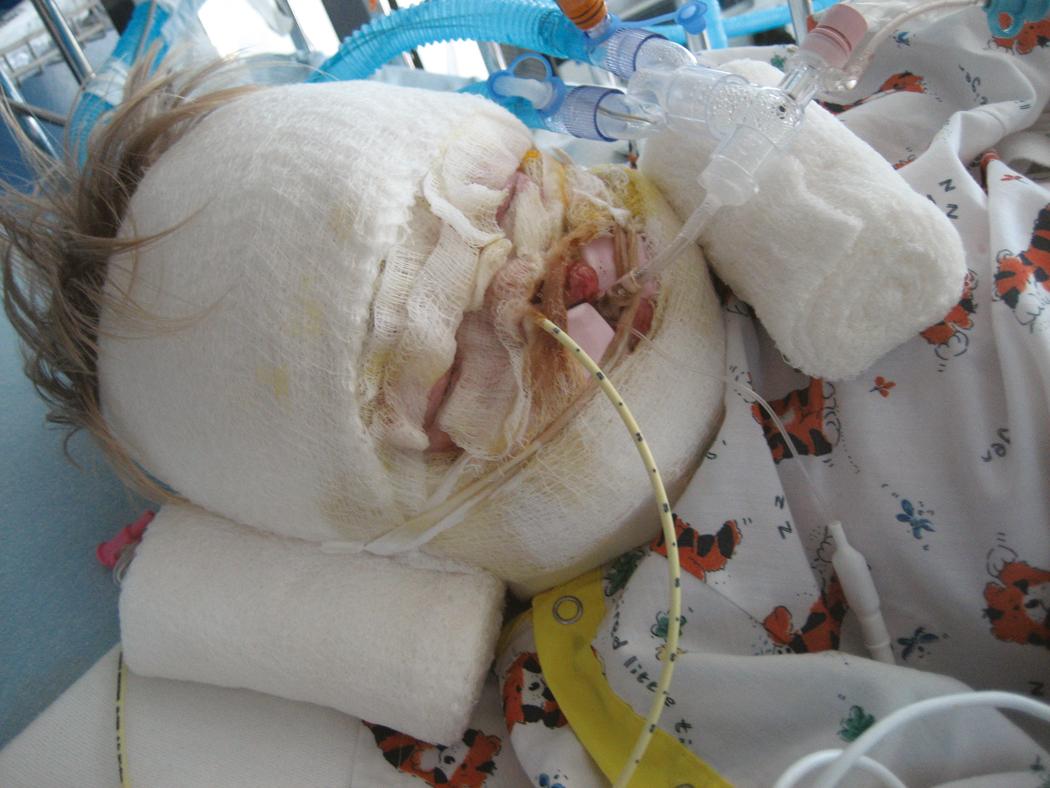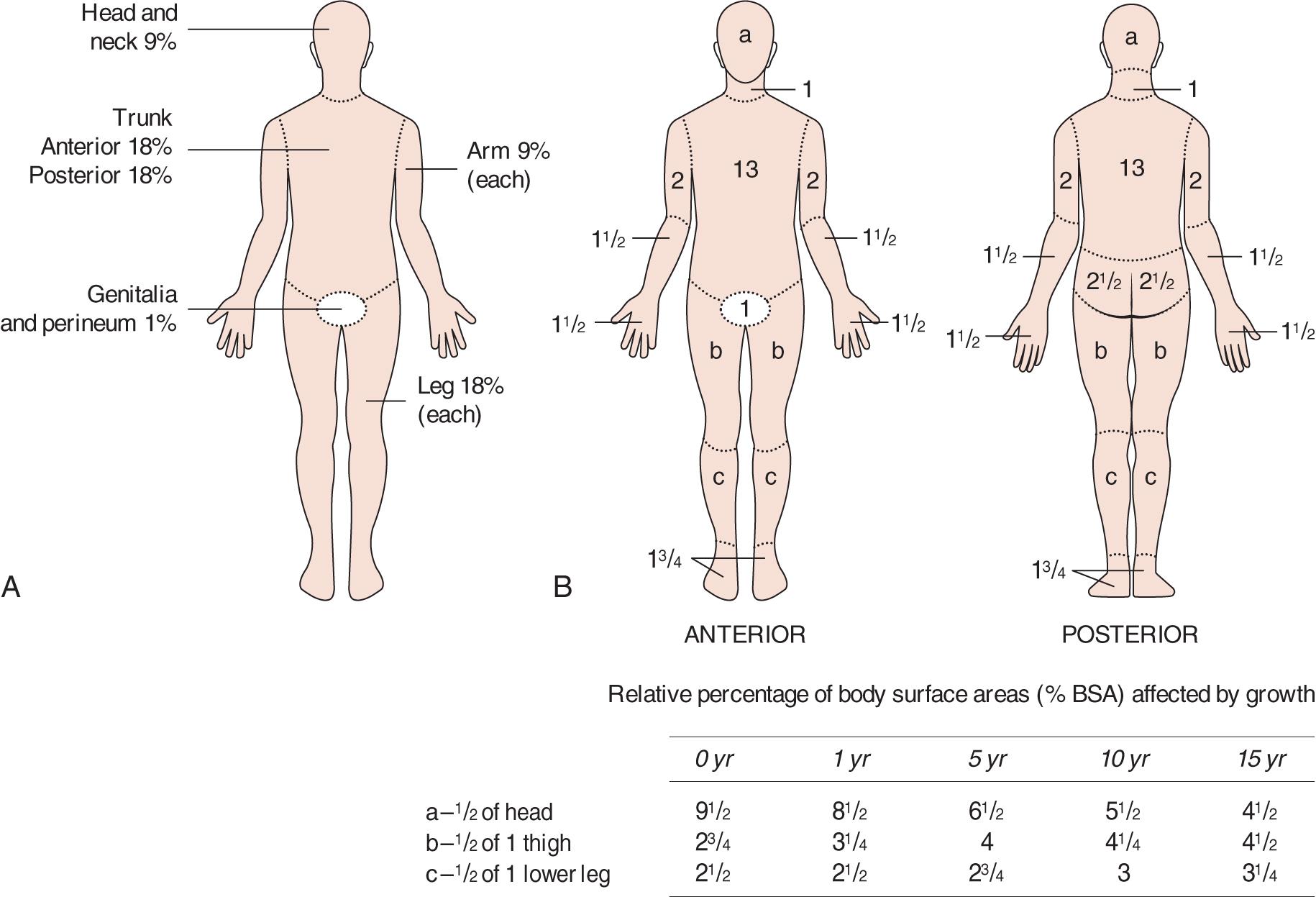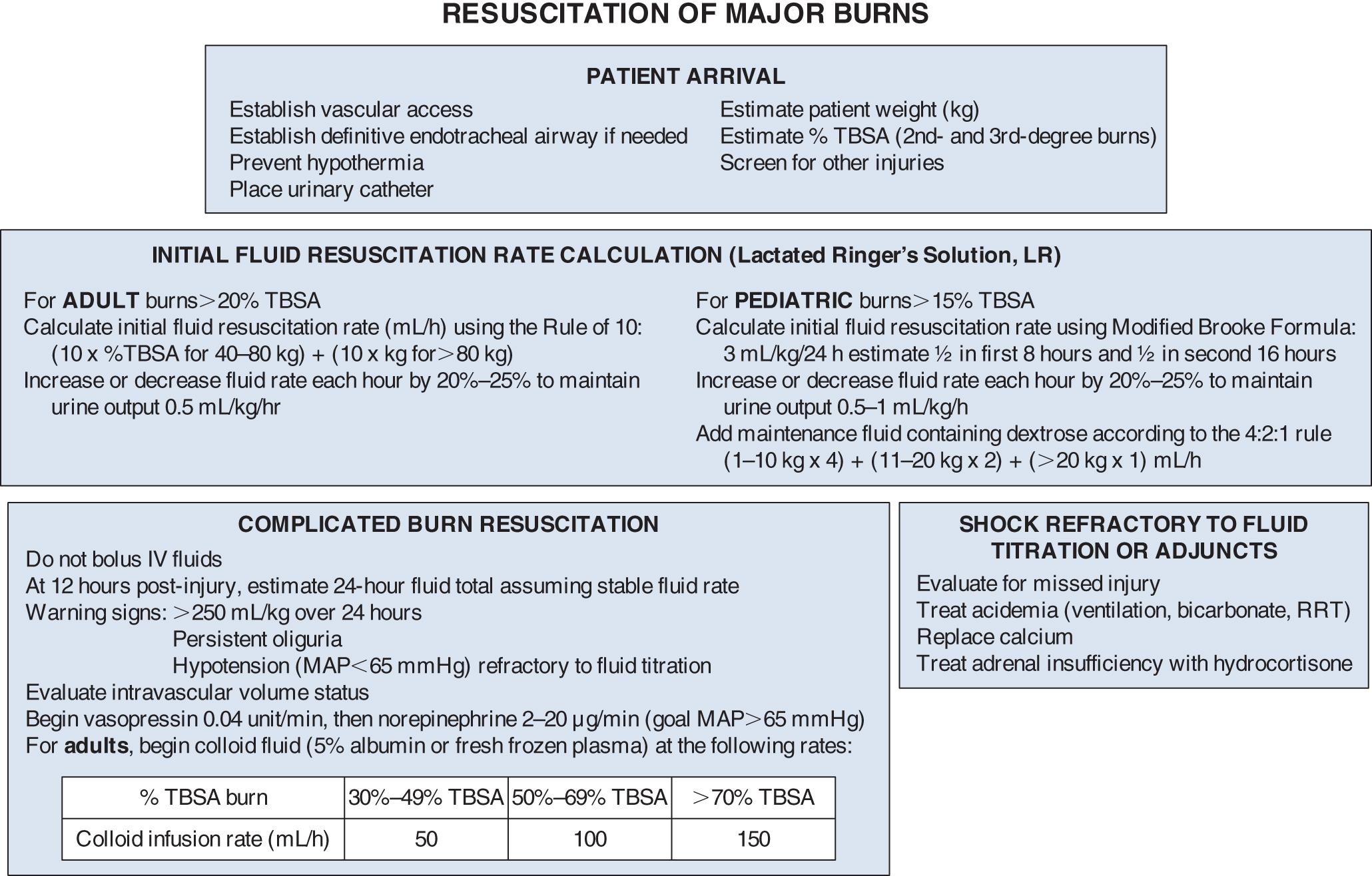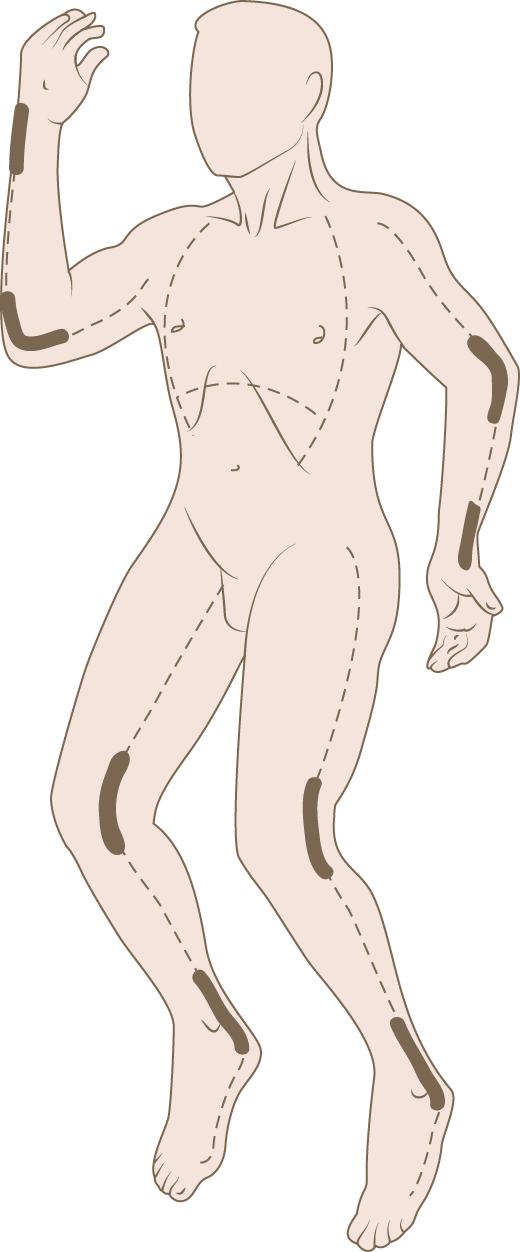Physical Address
304 North Cardinal St.
Dorchester Center, MA 02124
Patients with severe burns today are more likely to survive compared with those injured decades ago. Advances in early source control of deep burns, antimicrobial strategies, and critical care medicine are largely responsible, buoyed by translational research in burn-induced inflammation, hypermetabolism, and the wound environment. As survival rates improve, burn clinicians are challenged to address the sequelae of critical illness after recovery.
Designated burn centers and units are resource-intensive initiatives that thrive in a collaborative model of care. A wide variety of personnel provide specific expertise to ensure the survival and functional recovery of injured patients. The burn team consists of surgeons, intensivists, anesthesiologists, nurses, physical and occupational therapists, respiratory therapists, nutritionists, psychiatrists and psychologists, chaplains, and child-life therapists, among others.
Disasters, both natural and those caused by humans, repeatedly highlight the need for nonburn and nontrauma centers to develop plans for managing large numbers of casualties. In this setting, intensivists and surgeons must have some familiarity with the acute resuscitation and stabilization of burn patients until safe transfer can occur.
Although most burn patients encountered in the intensive care unit (ICU) arrive having been screened by a trauma team, simultaneous transfer of multiple casualties and other factors may curtail the attention these patients receive. Burn patients may have other injuries, and it is important for critical care clinicians to not be distracted by the visual appearance of the skin. Injuries noted on primary and secondary surveys causing hemorrhage, airway compromise, or other threats to life should be addressed before beginning burn-specific resuscitation. Removal of contaminants, including fuel, should occur before transfer. Patients must be protected from hypothermia.
Early and serial assessments of the airway are critical. Smoke inhalation injury is familiar as a risk for airway compromise. However, mucosal and soft tissue edema from burns to the face or over large surface areas alone may cause progressive airway narrowing, when volume resuscitation is superimposed. Patients likely to require endotracheal intubation include those with symptomatic smoke inhalation injury, deep facial burns, or second- and third-degree injuries greater than 40% total body surface area (TBSA) ( Box 155.1 ). Supraglottic devices fail in the setting of oral and laryngeal edema. Using as large an endotracheal tube as practical facilitates pulmonary toilet. Endotracheal tubes should be secured with cotton twill ties, which are adjusted as edema progresses during resuscitation; many standard airway device holders do not adhere to burned skin ( Fig. 155.1 ). Frequently reassess the depth of the tube during the acute resuscitation period. Urgent tracheotomy is not indicated.

Volume resuscitation can be reliably conducted via peripheral intravenous (IV) or intraosseous (IO) catheters, but soft tissue edema often leads to early failure of such devices. Consider transitioning to central venous access in burns >40% TBSA. Likewise, deep burn eschar and soft tissue edema make noninvasive blood pressure measurements less reliable. For large burns, invasive arterial blood pressure measurement is recommended.
It is difficult to provide an early definitive visual diagnosis of burn depth. Soot and other debris may mask important visual cues, and progression of edema and cell death continue for hours. Clinicians should make their best estimate of burn depth upon initial survey and reassess periodically. Superficial burns (first degree) do not form blisters and appear red and blanchable. Partial-thickness burns (second degree) form blisters and remain moist and sensate and are often quite painful. Not all second-degree injuries are created equal, however. Slow capillary refill in second-degree injuries may indicate deeper dermal damage. These deeper partial-thickness injuries often act more like full-thickness injuries in their healing trajectory and contribution to inflammation. Full-thickness burns (third degree) are insensate and form leathery eschar and thrombosed vessels.
Make an initial estimate using the rule of nines or Lund-Browder Burn Estimate and Diagram by adding the areas of all second- and third-degree burns ( Fig. 155.2 ). Thus the percentage of TBSA reflects only second-degree and third-degree areas. For irregularly shaped areas, the patient’s hand (palm and fingers included) roughly estimates 1% TBSA. Once wounds are cleansed, recalculate the injury size.

Antihypothermia measures such as a warm room, warm fluid infusions, and convective forced-air blankets should take priority over antimicrobial dressings initially. Extremity escharotomy for circumferential burns, discussed later, is ideally completed by the most experienced clinician in the warmest, best-equipped, and best-lit location, often the operating room (OR) or dedicated burn ICU. This procedure may be deferred in patients with evidence of intact distal extremity perfusion until trauma surveys are completed. Thoracic escharotomy, however, can be a lifesaving procedure in a patient with deep circumferential torso burns who cannot be ventilated.
Fluid resuscitation after acute burn injury remains challenging. At TBSA ≥20%, the intense inflammatory response at the injury sites becomes a global cytokine storm, resulting in profound capillary leak and severe hypovolemia. Burn shock is caused by hypovolemia coupled with depression in cardiac function and low systemic vascular resistance. Resuscitation strategies during burn shock must restore intravascular preload with only as much fluid as is needed to reduce the risk of edema formation and resuscitation morbidity from capillary leak. The pathophysiology of edema involves disruption of the interstitial scaffold and loss of the oncotic gradient. The amount and type of fluid given during burn resuscitation continue to be debated.
Many developments in burn resuscitation occurred in the 20th century after large urban fires resulted in mass burn casualties. After the 1921 Rialto Theatre fire in New Haven, Connecticut, Underhill noted the composition of burn blister fluid was similar to plasma, suggesting fluid losses be replaced with infusions containing protein. Fluid replacement strategies based on percentage TBSA were introduced after the 1942 Cocoanut Grove nightclub fire. Refined by Evans in 1952, early strategies included both colloids (plasma) and crystalloids as resuscitation fluids in addition to dextrose-containing crystalloids as maintenance fluids. A modification decreasing the amount of colloid fluid required became known as the Brooke formula. In the 1960s Baxter and Shires used both human and canine data to generate an estimated fluid requirement of 3.5–4.5 mL per percentage TBSA per kilogram in the first 24 hours after injury, which became known as the Parkland formula. The Parkland formula and Modified Brooke formula, two of the most widely cited strategies, provide lactated Ringer’s solution (LR) as the resuscitation crystalloid, use no colloid in the first 24 hours after injury, and do not provide additional maintenance fluid. The previously discussed burn formulae rely on intravenously administered fluid. However, the enteral route may allow early initiation of resuscitation fluids, especially in resource-constrained environments, and warrants further study.
All resuscitation formulae require an accurate estimation of second- and third-degree burn size. Resuscitations of patients with ≥20% TBSA should be guided by one of the formulae, but clinicians must recognize that these formulae are initial estimates only. Typically, isotonic crystalloid fluid rates are increased or decreased each hour in response to urine output without boluses. The fluid volume a burn patient actually requires will vary widely based on many factors, including time from injury, the ratio of second-degree to third-degree burns, age, medical comorbidities, and presence of inhalation injury, among others. , Administered fluid significantly outpaced recommended estimates in burned casualties during the wars in Afghanistan and Iraq. The rule of 10 was developed in order to simplify the initial fluid rate calculation. The percentage TBSA is multiplied by 10, and the result is the initial crystalloid fluid rate in mL/h. For example, a patient with 40% TBSA would be initially given isotonic crystalloid at 40 × 10 = 400 mL/h. The rule of 10 applies to patients between 40 and 80 kg. For patients greater than 80 kg, 10 mL/h is added to the initial calculation for every 1 kg over 80 kg. The fluid rate is adjusted up or down by 20%–25% each hour to maintain normal urine output (0.5 mL/kg/h for adults). The rule of 10 does not give a 24-hour fluid estimate, but rather forces the clinician to monitor and adjust the resuscitation for the individual patient. A suggested algorithm for burn resuscitation is given in Fig. 155.3 . Other endpoints of resuscitation are discussed later, although urine remains the standard method of titrating resuscitative fluids in burn patients ( Table 155.1 ).

| Endpoint | Target Range |
|---|---|
| Urine output |
|
| Mental status | Follows commands, purposeful age-appropriate activity |
| Heart rate |
|
| Systolic blood pressure |
|
| Central venous pressure | 6–10 mm Hg |
| Stroke volume variation | <13% |
| Lactate | <2 |
| Base deficit | Trend toward zero |
| Hematocrit | Gradual dilution |
Balanced crystalloid solutions such as LR continue to be recommended. , The introduction of colloid should reduce the crystalloid fluid totals and subsequent tissue water deposition. The use, timing, and duration of the colloid fluid adjunct continue to be debated, and prospective observational trials are currently underway. Patients who would benefit from early colloid use are those at risk of overresuscitation morbidities—historically burn size ≥30% TBSA. Common colloids include 5% or 25% human albumin solutions and fresh frozen plasma (FFP), with each choice reducing fluid totals, although conclusions on mortality require further study.
Vitamin C (ascorbic acid) is a pharmacologic adjunct thought to reduce resuscitation-related complications. As an antioxidant, it regenerates vitamin E, which scavenges reactive oxygen species (ROS) in the cell membrane. ROS are plentiful during burn shock and contribute to endothelial injury. Preclinical studies and limited clinical data have shown that a high-dose vitamin C infusion during the early hours of burn resuscitation reduces the isotonic crystalloid requirement, decreases tissue water deposition, and improves respiratory function. The vitamin C dose (66 mg/kg/h) is infused in an LR solution and its rate calculated as part of the total LR resuscitation volume. This adjunct performs best when started early (within 6 hours of injury) for burns >30% TBSA. Counterintuitively, increases in IV fluid rate may be required for a portion of the first 24 hours because of the diuretic effect of high-dose vitamin C. Savings in tissue water deposition result from the net 24-hour volume and reduction in oxidative stress. ,
Other adjuncts to resuscitation include vasoactive medications, renal replacement therapy (RRT), and total plasma exchange (TPE). Vasoactive medications lack a clearly defined role, as the primary mechanism behind shock in these patients is hypovolemia. However, vasopressin (at 0.04 unit/min) and other vasoactive medications are useful for maintaining mean arterial pressure (MAP) >65 mm Hg in patients who appear to be receiving adequate volume. Vasopressors allow focused treatment of the vasodilatory component of burn shock. Crystalloid boluses in this setting contribute to overresuscitation morbidity. Patients who demonstrate persistently decreased cardiac function also may benefit from cardiac inotropic support during resuscitation. The use of vasoactive medications and inotropes must be guided by both invasive hemodynamic and laboratory monitoring. Failure to correct hypovolemia before using these agents often leads to worsening of the shock state. RRT and TPE have both been used during burn resuscitation. They are believed to facilitate resuscitation by cytokine removal, thus blunting the proinflammatory “cytokine storm” of early burn shock. ,
Monitoring a burn resuscitation requires serially evaluating a constellation of physical examination findings, vital signs, laboratory data, and invasive monitors. Urine output remains the primary monitor, with a goal of 0.5 mL/kg/h (30–50 mL/h for most adults). However, confounding factors such as early oliguric acute kidney injury, prior dehydration, alcohol intoxication, use of diuretics, and glycosuria can make urine output an unreliable indicator of resuscitation progress. The vital sign derangements typically encountered in burn shock are caused by a massive release of catecholamines, which increase the heart rate to 130 bpm or greater. This effect can persist for months without intervention (see Table 155.1 ). Controversy remains over the most useful laboratory values during burn resuscitation. Serum lactate and base deficit have correlated with mortality and morbidity. , Central venous oxygen saturation has crossed over from sepsis resuscitation into burn shock management. Hemoconcentration is observed early after burn injury and is late to correct. Titrating crystalloid fluid resuscitation to endpoints other than urine output is quite difficult, and no one endpoint should take precedence. Instead, the trends of as much data as possible should be examined to determine if volume resuscitation should be augmented versus other interventions such as vasopressors to address vasodilation.
Examining the impact of burn resuscitation on cardiac function requires advanced monitoring. Although the pulmonary artery (PA) catheter has largely been replaced by other technologies such as echocardiography and arterial waveform monitoring (stroke volume variation [SVV]), it may be required in patients with a history of heart failure or who require inotrope use. The hyperdynamic response to burn injury and poor correlation of preload and cardiac output estimations with ultimate fluid requirements have challenged the universal adoption of these technologies in the burn ICU. Clinicians must take as many variables into consideration as possible when determining the adequacy of resuscitation.
The judicial use of fluid and accurate monitoring is essential to avoid overresuscitation morbidities, including extremity compartment syndrome, acute respiratory distress syndrome (ARDS), abdominal compartment syndrome (ACS), orbital compartment syndrome, and cerebral edema. These complications are associated with severe morbidity or mortality. Patients at risk of receiving large resuscitation fluid volumes should be identified. One assessment is the “Ivy Index,” which associates patients who receive >250 mL/kg in the first 24 hours postburn with increased risk of ACS. Recognizing this trajectory allows initiation of fluid-sparing adjuncts, including colloids, vasopressin, RRT, or surgical intervention such as decompressive laparotomy.
Clinical evidence of inhalation injury includes deep facial burns, stridor, soot about the nares and mouth, or carbonaceous sputum. Patients evacuated from enclosed spaces (vehicles and buildings) are most at risk. Fiberoptic bronchoscopy in the intubated patient may confirm subglottic inhalation injury, although the visual grade of inhalation injury does not necessarily correlate with common sequelae, including increased resuscitative fluid requirements, airway obstruction, bronchospasm, pneumonia, and ARDS. The burden of carbonaceous debris and epithelial sloughing are managed with aggressive pulmonary toilet. Nebulized adjuncts include unfractionated heparin (antiinflammatory and anticoagulant), N-acetylcysteine (antioxidant), and beta-adrenergic agonists (antiinflammatory and treats bronchospasm). , Prophylactic antibiotics are not recommended, but as pneumonia is common, clinicians should have a low threshold for obtaining cultures, including bronchoalveolar lavage samples, and starting antibiotic therapy in patients with new-onset fever and worsening respiratory function in the days after injury.
Adherence to lung-protective ventilation strategies is standard in most ICUs and should be extrapolated to most patients with burns and inhalation injury. However, hypercatabolism or inhalation injury may cause severe gas exchange derangements, necessitating higher-than-expected mean airway pressures. Inverse ratio modes may not allow adequate expiratory time in the setting of hypercarbia. Specialized strategies, including high-frequency percussive ventilation (HFPV), have been used to obtain early bronchial clearance of debris, lower mean airway pressures, and provide tidal breaths and have found a niche in the burn population. Timing of tracheotomy in burn patients unable to liberate from mechanical ventilation varies among centers. Injury location, respiratory dysfunction, metabolic demands of large injuries, and refractory delirium all play a role in the decision and should become clear within 2 weeks of injury.
Patients with severe ARDS after inhalation injury are typically supported by lung-protective ventilation and adjuncts including reduction of excess fluids, early use of diuretics, neuromuscular blockade, prone positioning, and use of pulmonary vasodilators. Extracorporeal membrane oxygenation (ECMO), long avoided in adult burn patients, is now applied more regularly. ECMO strategies without systemic anticoagulation have seen successful use in burn patients requiring excision and grafting. Mortality in burn patients requiring ECMO is similar to nonburn patients.
All patients with suspected inhalation injury should also be suspected to have carbon monoxide (CO) exposure. Co-oximetry via arterial blood gas is used to measure CO-hemoglobin levels. Symptoms of CO toxicity include confusion, stupor, coma, seizures, and cardiac ischemia. Administer 100% oxygen. Hyperbaric oxygen therapy may reduce the CO-hemoglobin half-life, but this therapy is cumbersome, particularly in the critically ill patient.
Cyanide (CN) toxicity after smoke inhalation causes failure of oxygen utilization. Severe lactic acidosis is noted, although underresuscitated burn patients present in similar fashion. In addition to 100% oxygen, the antidote hydroxocobalamin should be administered. Sodium thiosulfate may be given via the intramuscular injection route.
Escharotomy may be required for circumferential full-thickness burns to extremities with evidence of distal ischemia. If the burn is partial thickness or not circumferential, first rule out hypovolemic or hemorrhagic shock. Burned extremities should be elevated 30–45 degrees to decrease edema. Repeat the vascular examination at least every hour. The requirement for escharotomy usually presents in the first 24 hours. If available, use a handheld Doppler probe to assess the palmar arch, dorsalis pedis, and posterior tibialis for a normal triphasic signal. Consider performing escharotomy early, based on the vascular examination.
Escharotomy is performed by incising full-thickness burns just into the subcutaneous fat to allow the incision to visibly spring open. Patients will require analgesia, sedation, and usually intubation. Even though the eschar is insensate, deeper structures are not. Electrocautery is recommended because blood loss can be significant. Although this procedure can be performed in the ICU or emergency department, the OR, with its lighting and equipment, may be the better option. Extend escharotomy incisions the entire length of the circumferential portion of full-thickness burn, crossing all affected joints ( Fig. 155.4 ). Reassess circulation after performing each incision. Once perfusion is restored, control bleeding, perform dressing care, and elevate the extremity once again. Continue regular vascular assessments. Be prepared for late bleeding as the tourniquet effect of circumferential burns is released. Fasciotomies on burned extremities are rarely required. Patients at risk for requiring a fasciotomy often have associated vessel injury with delayed revascularization, massive transfusion, or crush injury.

Become a Clinical Tree membership for Full access and enjoy Unlimited articles
If you are a member. Log in here